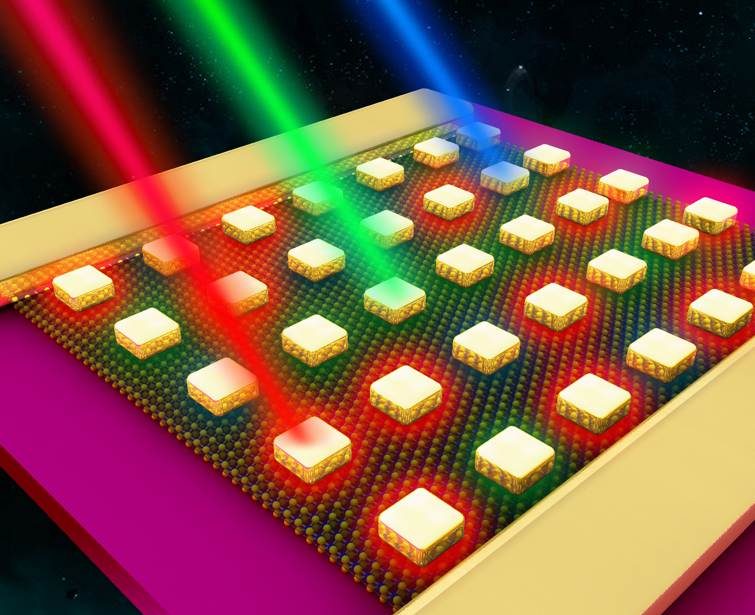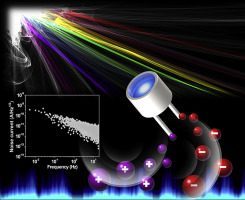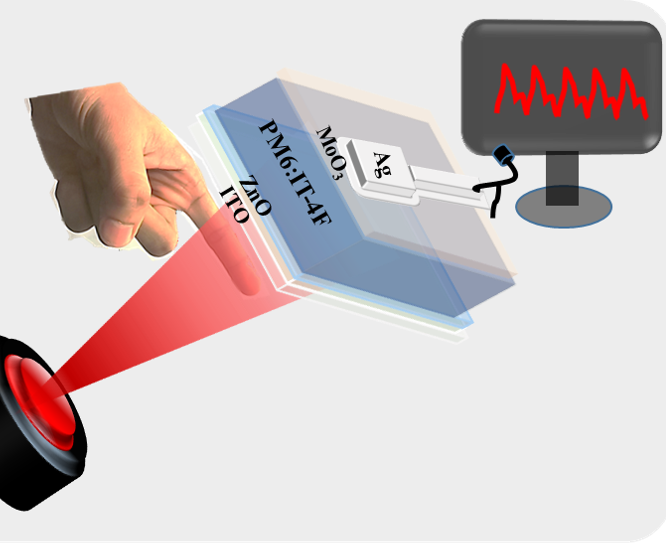RESEARCH
photodetectors



Photodetectors can convert optical signals to electronic signals, which are widely applied in optical communication, environmental monitoring, cameras, smart phones, image sensing, and so on. Compared to commercial photodetectors such as silicon (Si)- and indium gallium arsenide (InGaAs)-based photodetectors, OPDs are increasingly attractive for light sensing applications as they combine detection wavelength tenability, solution processability, and high photogeneration yield with low fabrication costs, lightweight, and flexibility. The basic structure of OPDs generally includes two essentials parts: an active layer for light absorption and electrodes for the collection of charge carriers (electrons and holes). The working mechanism of OPDs is similar to that of organic photovoltaics (OPVs), which can be summarized as (i) the organic semiconductors absorb photons to generate excitons (electron−hole pair) and then the excitons diffuse to donor/acceptor interfaces; (ii) the excitons separate into electrons and holes driven by electric field force formed by extra applied bias; (iii) holes are transferred to the anode through the channels formed by the highest occupied molecular orbital (HOMO) of the donor, and electrons are transported to the cathode via the channels formed by the lowest unoccupied molecular orbital (LUMO) of the acceptor; (iv) the holes and electrons are collected by the corresponding electrode to generate photocurrent.
Photodetectors are integral part in next-generation flexible and wearable electronics and in Internet of Things (IoT) devices. Our group has realized the fabrication of self-powered panchromatic bulk heterojunction organic photodetectors (BHJ OPDs) by combining a low-bandgap small molecule IT-4F, with a visible light absorbing polymeric donor, PM6. By employing a “thick junction” strategy, the leakage paths in the active layer is effectively reduced, resulting in significant improvement in the detectivity of the devices. The thick active layer device exhibited an excellent spectral response from 400 to 850 nm with a highest photoresponsivity of 0.50 A/W (at λ ∼ 770 nm) and a specific detectivity of 2.65 × 1012 jones at 0 V. Moreover, the devices exhibited good stability and real-time heart rate (HR) monitoring by photoplethysmogram analysis. Collaborating with NIIST, Trivandrum, the group has fabricated unsymmetrical squaraine dye-based organic photodetector exhibiting enhanced near-infrared sensitivity. The photodetector exhibited a broad spectral response extending to 950 nm and specific detectivity of 6 × 10^11 Jones at 840 nm with an ultrafast photoresponse in the range of ∼15 ns.
